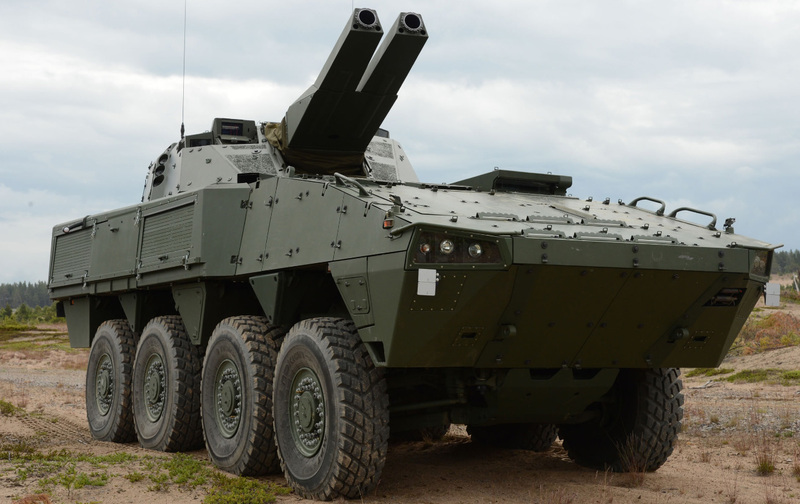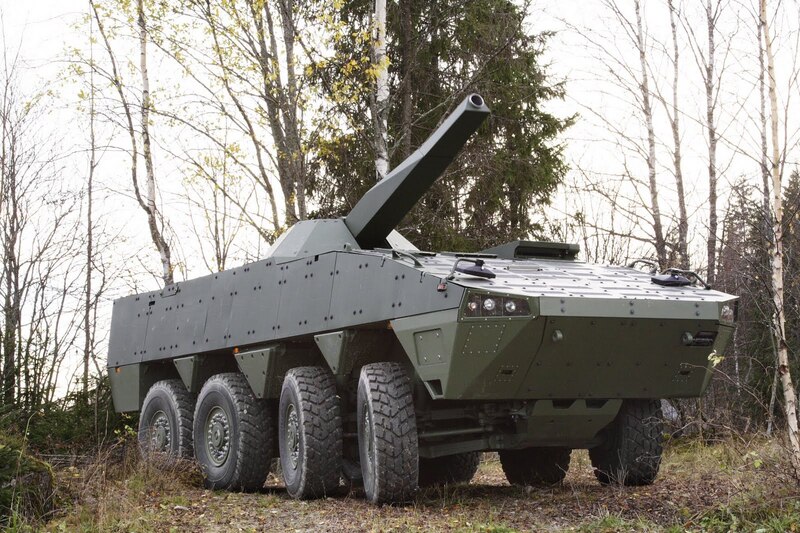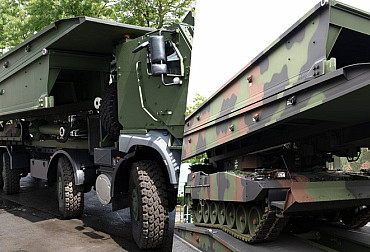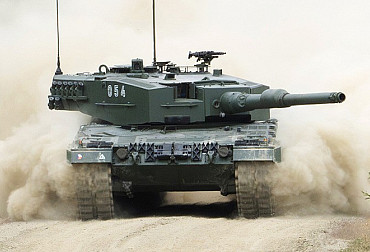Self-propelled mortars for the Czech Armed Forces – single-barrel turrets on 8x8 wheeled chassis
Although the acquisition of self-propelled mortars has not been much discussed, it is a project that certainly deserves attention. In 2018, the Army defined the need to acquire 62 self-propelled mortars of 120 mm calibre capable of indirect, semi-direct and direct fire. If, in general, at least some of the vehicles on tracked platforms could be allowed, it is becoming increasingly obvious that the choice will fall purely on a wheeled platform with an 8x8 chassis arrangement. The Rapid Deployment Brigade will not include tracked vehicles, and the 7th Mechanised Brigade, on the other hand, may use wheeled equipment. Such an approach narrows down the possible solutions to practically three systems, given the offer that exists on the market.
If we leave aside the various solutions for tracked vehicles, which will be included in the armament of, for example, the neighbouring Slovak Army as part of its contract for tracked IFVs, then the three possible solutions mentioned above differ from each other in terms of the chassis platform and the turret installed. There are not many options. As far as turrets are concerned, practically only the AMOS twin-barrelled turret and the NEMO single-barrelled turret from the Finnish company Patria are on offer, or the single-barrelled turret fitted to the Polish Rak vehicle (M120K; Moździerz 120 Kolowy). And as for the chassis platform, the Pandur II and the Finnish AMV vehicle will "traditionally" compete for the contract. So let's take a look at the pros and cons of each option.
The AMOS twin-barrel turret is too heavy
The AMOS twin-barrelled turret offers interesting parameters (the system is capable of sustaining a rate of fire of 12 rounds per minute and, using the computer-controlled MRSI - Multiple Round Simultaneous Impact function, it is possible to set up a burst of up to 10 rounds to hit the target simultaneously with great effectiveness), but it is also very heavy (4445 kg). Although there is an application for it on an AMV chassis (and even on the older six-wheeled Pasi armoured personnel carrier), it can be assumed that this is not a route the Army will want to go down due to potential vehicle stability issues in difficult terrain/when shooting. A heavy turret is more suitable for a tracked platform, or it could be placed on a container for static deployment.
 Picture: AMOS turret set with double-barrel mortar on AMV chassis | Patria
Picture: AMOS turret set with double-barrel mortar on AMV chassis | Patria
With the requirement of the ability to conduct direct fire, this leaves virtually two options for single-barrel mortar turrets. Less likely, but not uninteresting, is the Polish solution in the form of the Rak mortar turret, the development of which began in 2006 and was first presented to the public at the MSPO trade fair in Kielce in 2014. The Polish Army uses the chassis of the KTO Rosomak vehicle for it, which is a licensed Polish variant of the Patria AMV.
The Polish Rak mortar as a possible solution
The loading of the Rak mortar from HSW is automatic, the elevation range is -5° to +80°, and the traverse is a full 360°. The range is 500-8000 m, or up to 12 km with advanced ammunition, at 6-8 rounds per minute. The turret is electrically operated with a manual backup system. The vehicle is manned by three men and the M120K mortar carries 46 rounds of ammunition. The vehicle can be ready to fire within 30 seconds, and leave the position within 15 seconds after the firing is over.
Firing is controlled by a ballistic computer with a TOPAZ fire control system, the vehicle is equipped with a TALIN 5000 inertial navigation system, a FONET communication system, a battle management system with the ability to display the tactical situation on a digital map and the possibility of automatic cooperation with external command and fire control systems.
The single-barrel Finnish NEMO turret is more likely
If the Polish system is still only deployed in the Polish Army, the Finnish Patria NEMO mortar (NEwMOrtar) is already available in Saudi Arabia, Slovenia and the United Arab Emirates. The system was developed in 2005-2007 as a lighter variant of the AMOS system. It offers a -3° to 85° elevation range, a 360° traverse, a 3 m long barrel and automatic reloading, and a range of more than 10 km, similar to the Polish mortar. The rate of fire is claimed to be 6-10 rounds per minute (the first three rounds can be fired within 15 seconds; preparation for firing takes less than half a minute, and the vehicle can leave the position immediately). The rate of fire is close to that of manually loaded mortars mounted on vehicles such as the M1129 Mortar Carrier.
 Picture: Patria AMV with NEMO mortar system (120 mm) | Patria
Picture: Patria AMV with NEMO mortar system (120 mm) | Patria
It shares with the AMOS system the ability to conduct multiple rate of fire (MRSI) with up to 6 grenades impacting simultaneously. A major advantage of the NEMO system is its relatively low weight of 1900 kg, which allows it to be easily integrated even on lighter chassis types.
AMV or Pandur?
This brings us to the question of a chassis platform suitable for the Czech Army. It can be assumed that when choosing the NEMO system, the Finnish manufacturer will promote its solution in the form of an AMV. The advantage of such an option is that there will be no need to spend additional resources on development – the application of the NEMO turret system for the AMV vehicle already exists. This will undoubtedly be an important argument that Patria will stress. However, the Army will have to take into account the issue of operational and lifecycle costs, and in the case of the introduction of the AMV, the expansion of the already rich variety of wheeled armoured vehicles in the armoury. In this respect, the fact that vehicles of this type have recently been acquired in large numbers by the Slovak Army and the maintenance logistics could be shared with Slovakia in some appropriate form may be a mitigating factor.
In spite of these arguments, however, the more logical option seems to be to place the NEMO (or Rak) turret on the proven, well-established and Czech Republic-produced Pandur II 8x8 CZ platform from Tatra Defence Vehicle. Such a solution will entail the necessity to develop the turret application on a Czech chassis, which will make the purchase of the mortar system visually more expensive, but in the long term such a choice will offer savings in the form of uniform maintenance logistics, self-sufficiency and independence from foreign suppliers. It is unlikely that the number of heavy wheeled armoured vehicles (besides the Pandur II 8x8 there are also Titus 6x6 vehicles being introduced into the army) will be expanded by another type, "only" because of the armament of mortar platoons.
The Army will prospectively receive seventy new Pandur II 8x8 CZs in the KBVP variant for the 44th Light Motorised Battalion, which will become mechanised. The existing Pandurs of the remaining two battalions will undergo modernisation; and even in terms of opportunities for the indigenous defence industry, it will only be good if the Army opts for the Pandur II as the platform for its modern self-propelled mortars.





















